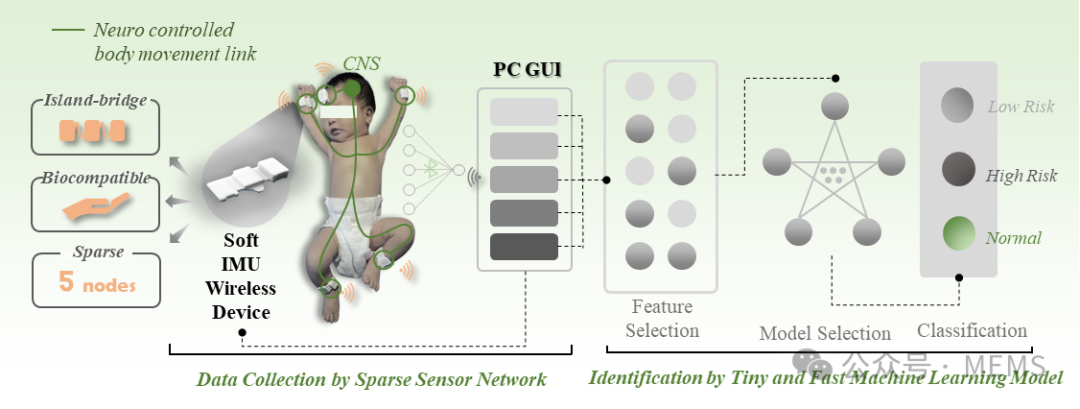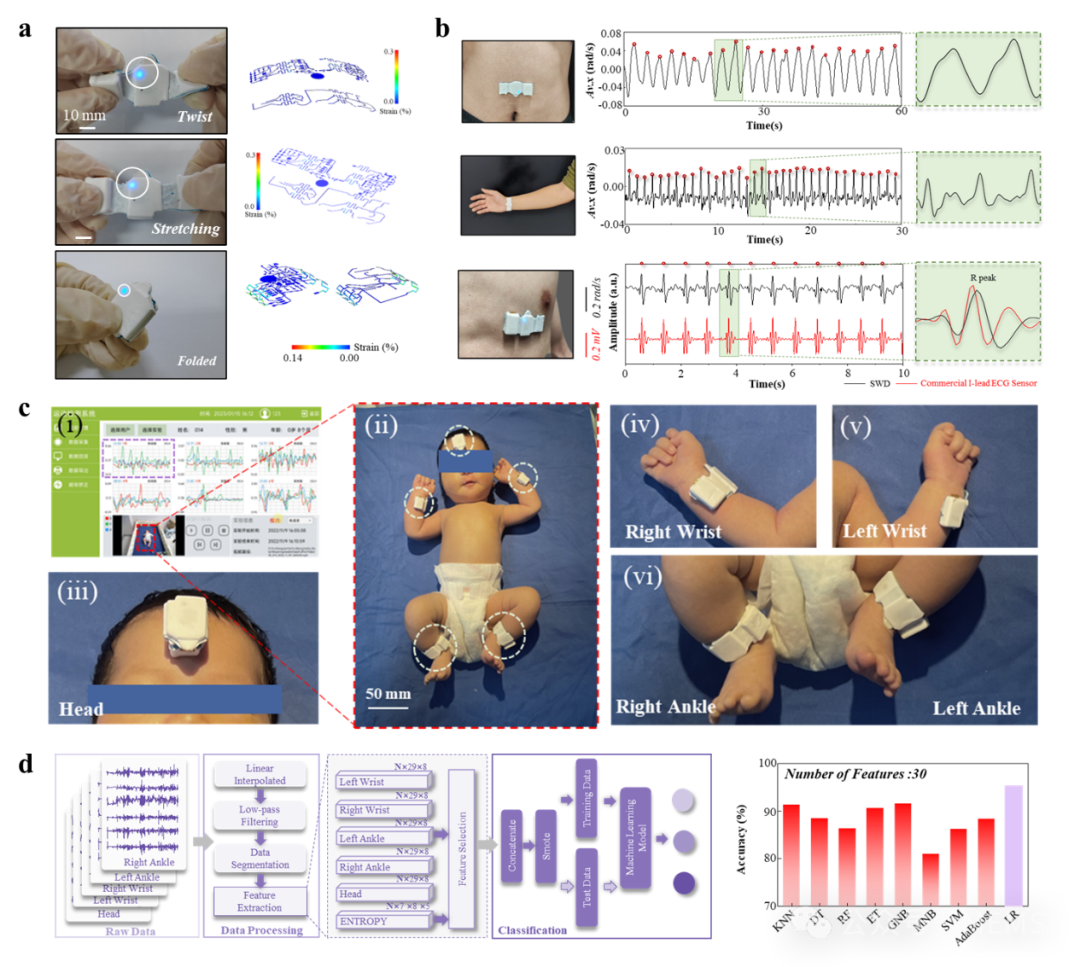General Movement (GM) has been widely used for the early clinical assessment of neonatal brain development disorders (such as cerebral palsy) to facilitate ultra-early intervention and rehabilitation for at-risk newborns. However, clinical practice currently relies heavily on the subjective evaluations of pediatricians, lacking quantitative assessment methods, and requires a large number of specialized doctors and clinical staff, which limits the possibility of large-scale screening, especially in areas with low medical standards. Although cameras can be used for neonatal motion capture and digitization, there are still issues related to privacy and usability. Exploring a wearable physiological sensor network for assessing neonatal general movements has significant application value.
Recently, the team led by Yang Hongbo from the Suzhou Institute of Biomedical Engineering and Technology, Chinese Academy of Sciences, in collaboration with Cheng Huanyu’s team from Pennsylvania State University, proposed a sparse sensor network composed of flexible wireless IMU sensors (SWD) for the ultra-early rapid automatic screening of neonatal cerebral palsy (Figure 1), capable of accurately screening newborns under 20 weeks for cerebral palsy within 15 minutes.
 Figure 1: Schematic design and application of the Smart Sparse Sensor Network (SSN SWD) system
Figure 1: Schematic design and application of the Smart Sparse Sensor Network (SSN SWD) system
The sparse sensor network for motion capability assessment consists of only 5 sensor nodes, each adopting an “island-bridge” structure with biocompatible material design, providing excellent mechanical properties and biocompatibility, ensuring the comfort and safety of newborns. As shown in Figure 2a, under the condition that there is no damage to the newborn’s skin and no interference with movement, the overall system can continuously and stably acquire information on the newborn’s acceleration and angular velocity. As shown in Figure 2b, the excellent wearable mechanical-electrical characteristics have the potential to monitor physiological information related to mechanical acoustics of the human body (respiration rate, heart rate, pulse, etc.). As shown in Figure 2c, the research team collaborated with the First Affiliated Hospital of Jilin University, Suzhou Children’s Hospital, and Quwo County Traditional Chinese Medicine Hospital in Shanxi Province to complete a concept validation clinical trial with 23 newborns, confirming the reliability of the system. As shown in Figure 2d, combined with a compact, easily deployable machine learning algorithm, this system can automatically and reliably identify newborns at high risk for brain development issues, with an accuracy greater than 99%.
 Figure 2: (a) Coupling characteristics of wearable flexible wireless IMU sensors (stretching, bending, twisting, folding); (b) Monitoring of human mechanical acoustic information (breathing, pulse, heartbeat); (c) Images of newborns wearing the device during application validation (head, wrist, and ankle); (d) Data flow and accuracy of machine learning algorithms.
Figure 2: (a) Coupling characteristics of wearable flexible wireless IMU sensors (stretching, bending, twisting, folding); (b) Monitoring of human mechanical acoustic information (breathing, pulse, heartbeat); (c) Images of newborns wearing the device during application validation (head, wrist, and ankle); (d) Data flow and accuracy of machine learning algorithms.
In summary, this work provides a new digital method and automation technology for large-scale rapid screening of neonatal brain development diseases, which is of great significance for ultra-early intervention and rehabilitation of newborns with cerebral palsy. The research results were published in the internationally renowned journal Advanced Science (Chinese Academy of Sciences Q1 TOP, IF = 15.1) under the title “Intelligence Sparse Sensor Network for Automatic Early Evaluation of General Movements in Infants.” PhD student Bao Benkun is the first author, and postdoctoral researcher Zhang Senhao, researcher Cheng Xiankai, researcher Yang Hongbo, and professor Cheng Huanyu are co-corresponding authors. This research was supported by the Chinese Academy of Sciences International Cooperation Partner Program, National Key R&D Program, National Natural Science Foundation, Jiangsu Provincial Key R&D Program, among others.
Full text link: http://doi.org/10.1002/advs.202306025


